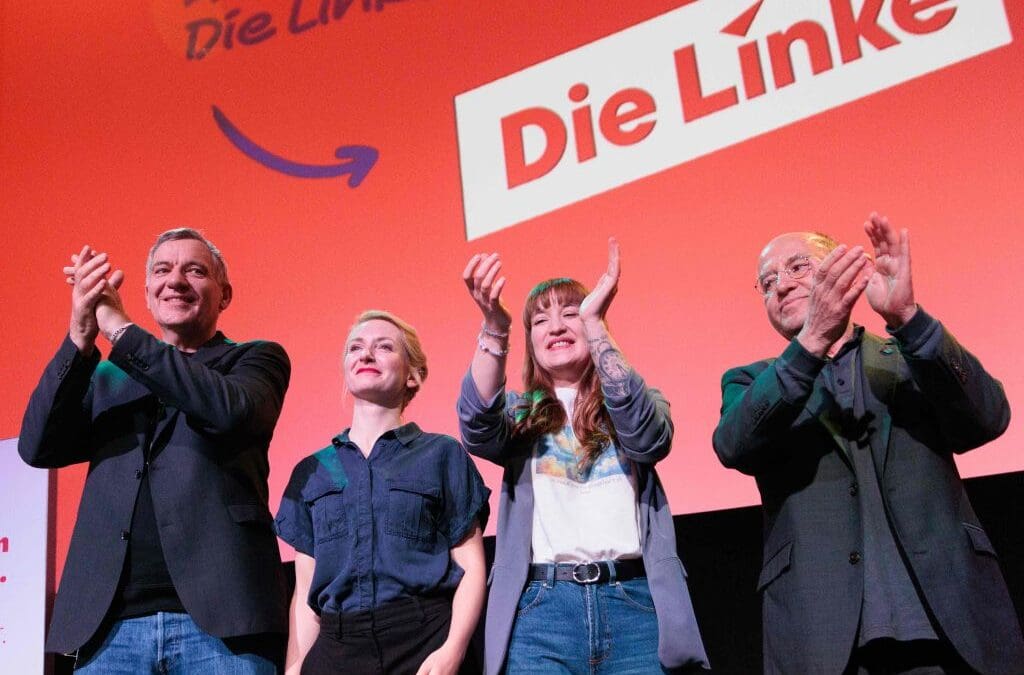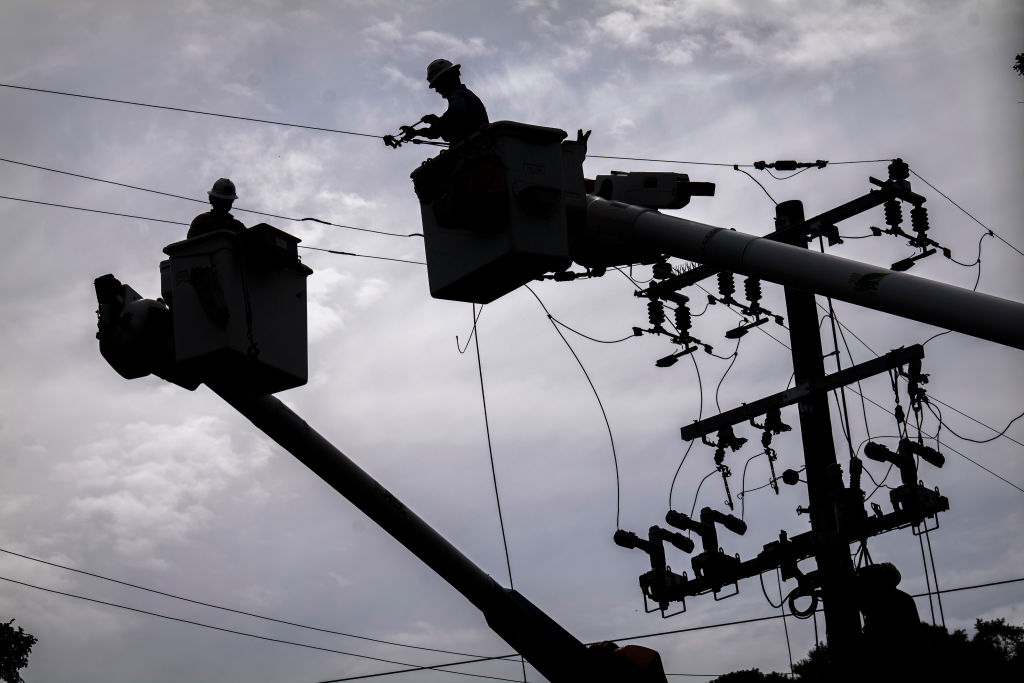
Trumpism Is Not Inevitable
February 24, 2025
Unionization may offer extra benefits (but also extra work) for women journalists, according to a new study
February 24, 2025
The conservative Christian Democrats (CDU) ran a campaign focused on law and order and halting immigration — and overtook Chancellor Olaf Scholz’s Social Democrats (SPD) as the largest party in the Bundestag, with 28.6 percent of the vote.
Far-right figures across the world were even more jubilant over the nationalist Alternative für Deutschland (AfD) becoming the second strongest force, with 20.8 percent support. This is a height not reached by a far-right party in Germany since the Nazi era. Congratulations came pouring in from Hungary’s Viktor Orbán, Italy’s Matteo Salvini, and Elon Musk.
The parties of the previous governing coalition had all taken a hit. The SPD fell nearly ten points to 16.4 percent, the Greens slipped to 11.6 percent, and the neoliberal Free Democrats (FDP) dropped out of parliament entirely, missing the 5 percent threshold.
Sunday’s elections were held about six months earlier than expected after Chancellor Scholz fired his finance minister, Christian Lindner, the head of his FDP coalition partners. The inevitable consequence: Scholz lost a vote of no-confidence, triggering these early elections.
The campaign period was dominated by heated discussion of immigration, enflamed by two terrorist attacks and the collaboration between the CDU and AfD in passing a parliamentary motion on curbing immigration. This weakening of the already-unstable “firewall” of noncooperation with the AfD led to protests — and wide-ranging condemnation of CDU leader Friedrich Merz.
It was in this rather dismal context that the prospects of socialist party Die Linke first began to take a turn for the better. This last-minute burst of “anti-fascist” energy and discontent among the broad left was surely decisive in giving Die Linke the boost it needed not only to stay in parliament, but to achieve a solid 8.8 percent of the vote.
This time, it’s looking like its parliamentary group will be at least sixty-strong, with six directly elected candidates including its first-ever MP in former West Berlin, in the working-class and multicultural Neukölln district. The candidate there was Ferat Koçak, a lifelong anti-racist activist and one of the party’s most outspoken figures on Palestine. Die Linke scored particularly well among first-time voters, scoring 27 percent among this group.
Die Linke has no doubt benefited from a form of strategic voting among young and progressive voters who see it as the only party that would never join a coalition with Merz’s increasingly right-wing CDU. Both the Greens and SPD may now do just that.
For most of the campaign period in January, Die Linke was still polling around the danger zone of 5 percent. But its numbers began to pick up rapidly, particularly after a viral video of the party’s lead candidate, Heidi Reichinnek, making a speech condemning Merz’s decision to vote alongside the AfD. She was already one of the party’s most social media–savvy figures, and the video singled her out as a clear left-wing voice against any collaboration with the far-right party.
But it wasn’t all social media, or luck. The party’s campaign projected a consistent and competent political image. Die Linke focused on affordable rent, social housing, and lowering the basic costs of food and public transportation.
Leading the way alongside Reichinnek were confident new faces in the party leadership: Ines Schwerdtner (formerly editor in chief of the German-language Jacobin) as well as Jan van Aken. All are relatively new to top party positions. Van Aken and Schwerdtner were only elected party coleaders in October, and had expected to have almost a year to prepare for the original election date. Die Linke hoped to rely on its active young member base to spend all summer on a comprehensive door-knocking campaign — a tactic that is usually still used sparingly in Germany.
Schwerdtner kicked this strategy into overdrive in her campaign for a directly elected seat in Berlin-Lichtenberg, while Reichinnek and van Aken visited constituencies around the country. They were complimented by a media campaign emphasizing continuity and highlighting the popular old party stalwarts like Thuringia’s Bodo Ramelow (constantly voted the most popular politician in that state), and Gregor Gysi. A familiar old face, Gysi had been the party’s leading media figure back in the 2000s, when the reformed former ruling party of East Germany merged with a left-wing split from the Social Democrats to form Die Linke.
Sahra Wagenknecht’s “anti-woke” split in late 2023 seems to have allowed Die Linke to play the role of the unabashed left-wing flank of what Germans call a “red-red-green” bloc. Meanwhile, Wagenknecht’s own party (the Sahra Wagenknecht Alliance, BSW) failed to reach the threshold to enter parliament, coming around 13,000 votes short. Statistics about who did give it their votes indicate that it wasn’t getting votes from former AfD voters, but from the SPD.
The BSW’s poor performance would seem to be mainly owed to the outcome of last fall’s elections in the eastern states of Thuringia and Brandenburg. There it explicitly campaigned as an alternative to the establishment parties. Yet when the votes were in, the BSW opted to join a coalition with the Social Democrats in Brandenburg, and a grand coalition with both the CDU and the SPD in Thuringia. It’s hard to imagine a more business-as-usual result.
Beyond cornering a left-wing electorate, Schwerdtner has emphasized the need for Die Linke to build its mass appeal, particularly among working-class voters. The postelection polling breakdown suggests that self-identified manual workers voted for the party at about the same rate as average (8 percent). But the AfD was far out in front among this category, at 38 percent. If this group is not the whole working class, it is a disturbing figure, and a call to action.
While Die Linke hails something of a victory, the far right is jubilant at its best-ever result, and Germany’s political discourse looks set to get increasingly nasty with a conservative-led government egged on by a strong far-right opposition. In this context, Die Linke’s voice in opposition is indispensable. There is no doubt that it will continue to defend the firewall against the AfD. But when it comes to rallying a wider base, winning over enough support to be considered a real mass party, Die Linke’s fresh start is, really, only a start.
Great Job Julia Damphouse & the Team @ Jacobin Source link for sharing this story.





